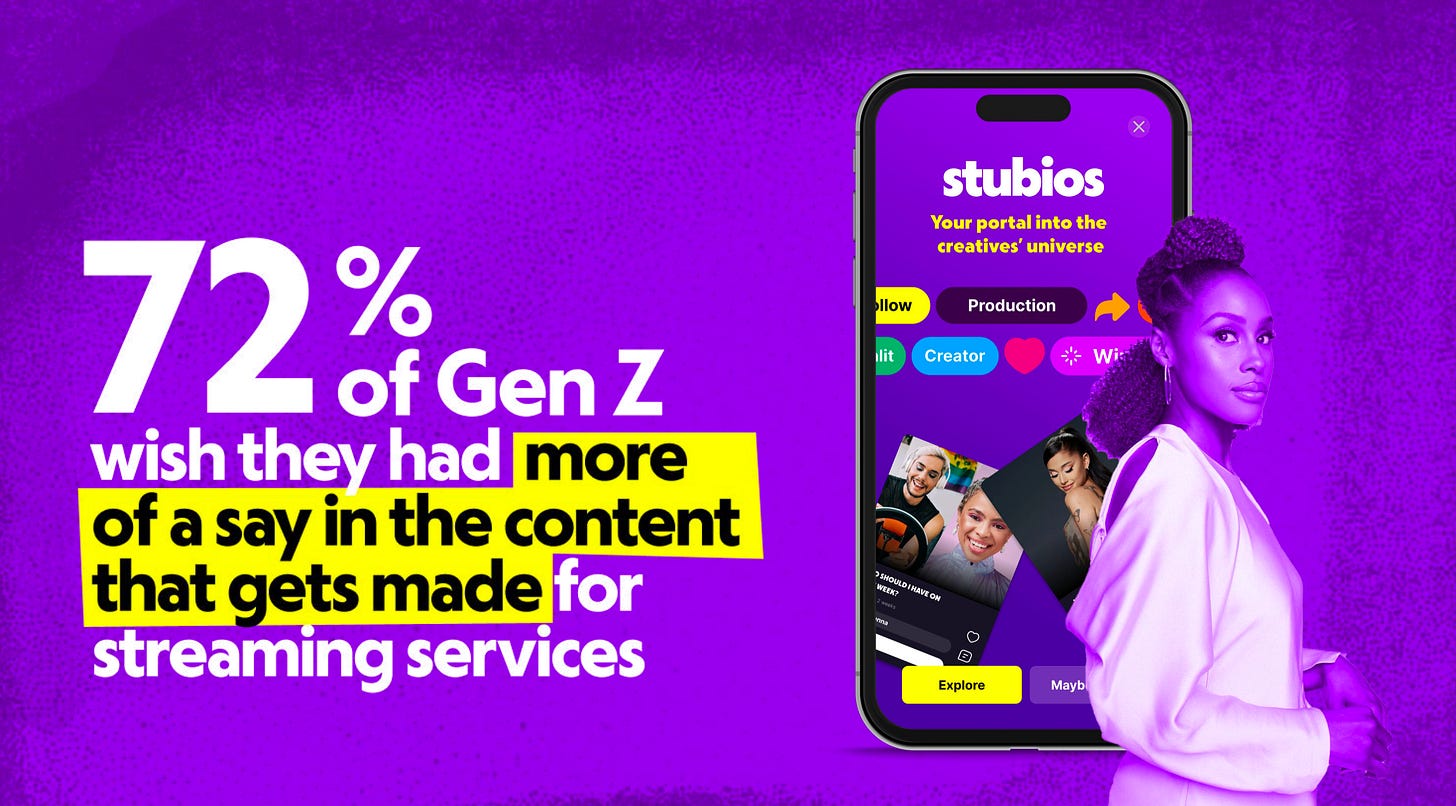NEW-stalgia Nation: Why Gen Z is Ditching Trending Content for Cultural Archaeology
What Gen Z's Streaming Habits Reveal About Their Hunger for Curation & Identity

I'm sitting in my living room watching my Gen Z babysitter navigate streaming platforms with the precision of a cultural anthropologist. She doesn't frantically scroll like I expected—instead, she methodically skips past all the trending shows to unearth a 1980s cult classic I'd never heard of. "This director was so ahead of her time," she explains, scrolling through her carefully curated watchlist that spans seven decades of film. Her approach to streaming mirrors exactly how she shops at thrift stores—bypassing the mainstream to curate her personal canon of "discovered" treasures.
This moment crystallizes what our research with Tubi has uncovered in "The Stream 2025," where we surveyed 2,502 18+ adults who stream video at least 1 hour a week. Streaming isn't just a means of consuming content; it has become a reflection of our broader cultural identity and values. As Adweek highlights our research, this reflection is so compelling that half of Gen Z admits to streaming during work hours—with nearly 48% confessing they lie to their bosses about it.
But here's what everyone misses: This isn't just about entertainment choices—it's about how young Americans are reclaiming personal curation in every aspect of their lives. When 73% of Gen Z say they're tired of keeping up with what's trendy, they're not just talking about TV shows—they're signaling a shift in how we construct identity in an algorithm-driven world.
Newstalgia: The New Taste Economy
Today's viewers aren't passive —they're cultural curators crafting personal identities through what they choose to watch. This isn't simple nostalgia; it's "newstalgia"—a deliberate approach to discovering and claiming cultural artifacts from across time.
The numbers tell the story: 66% of consumers enjoy discovering content originally released 10+ years ago, while 82% of Gen Z specifically browse streaming platforms to discover older content.
Think of Gen Z's obsession with 90s fashion, vinyl records, and film photography. The same curatorial eye now dominates streaming behaviors. Just as young people hunt through thrift stores for the perfect vintage jacket that nobody else has, they're digging through streaming catalogs for the undiscovered gem that defines their taste.
For marketers, this shift means connecting with emotional anchors rather than chasing fleeting trends. Brands that recognize this shift can create deeper connections by tapping into these meaningful emotional touchpoints rather than chasing what's temporarily trending.
The Relationship Marker: Shared Passwords as A Defining Relationship Moment

Streaming has become so intertwined with our identities that it's now a relationship milestone: 70% of singles won't share their streaming login with a romantic partner until the relationship becomes serious, while 44% of Gen Z have admitted to using an ex's streaming login even after breaking up.
Perhaps most telling, 38% of Gen Z and Millennials confess they've stopped dating someone because their taste in TV or movies was so different.
These aren't just quirky statistics—they're signals of how deeply our content preferences have become proxies for compatibility and intimacy. When we share our watchlists, we're sharing a piece of our identity.
The Fair Deal Economy: Why 4 in 5 Viewers Accept Ads for Free Content
Americans are becoming more cost-conscious amid rising economic concerns and are spending a combined $129 per month on streaming services and paid TV subscriptions, representing a 7.5% year-over-year increase.
Over half (56%) now closely monitor these services to avoid overspending. Gen Z viewers are particularly cost-sensitive: 76% say they have or would end their streaming subscription over increased price.
The value calculation is clear: 79% of consumers say, "If I'm paying for a streaming service, I expect no ads at all," while 81% say watching ads is a fair trade-off for access to free content.
For marketers, this explains why free platforms have become destinations for discovery. Viewers in discovery mode are in attention and brand connection mode—open to new experiences and willing to engage with relevant advertising that respects their intelligence. This is a crucial opportunity for brands to connect when viewers are most receptive.
Out of Sync: The Ad Experience Revolution
While 81% of Gen Z viewers would consider taking action after seeing interesting ads while streaming, 73% feel the ads they currently see are misaligned with their personal preferences.
When 70% of Gen Z say they feel seen when a streaming service helps them find niche shows, they're revealing a deep desire for platforms that understand their identity and values.
One key way to make Gen Z feel more seen, is to get them closer to the creators.
73% of Gen Z wants to see indie and original content by a more diverse set of creators, which is why Tubi launched Stubios—an interactive, fan-fueled studio program that connects non-traditional creators with audiences. By allowing viewers to follow creators, view behind-the-scenes footage, vote on projects, and offer input on productions in progress, Stubios breaks down the traditional barriers between audience and creators
This isn't just an advertising problem—it's a signal that consumers expect to be personally addressed and treated as a market of one. The most effective brands are showing up in the content, not just around it, creating integrated experiences that feel native to the viewing experience rather than intrusive interruptions.
Why This Matters: The Streaming Mirror
For marketers, these signals are invaluable:
Respect the curatorial mindset - Viewers want platforms that get them, not just algorithms that target them. Create experiences that help them discover their own taste, not just what's trending.
Create fair value exchanges - The acceptance of advertising in exchange for free content isn't reluctant—it's a sophisticated agreement that feels equitable when done right.
Embrace fandom as the future - When viewers want a say in what gets produced, they're signaling a desire for deeper connection with the stories they love. Brands that tap into this participatory culture create more meaningful bonds.
Design advertising that works for viewers - Advertising works when it works for the viewer, appearing in contexts that feel relevant rather than interruptive.
Recognize the power of "newstalgia" - It's not about what's new; it's about what resonates. Connecting with emotional anchors wins loyalty in ways that chasing trends never will.
The choices we make while streaming aren't just about finding something to watch—they reflect how we're navigating an increasingly complex digital world. As we curate our watchlists with intention, seek genuine discovery beyond algorithms, and make sophisticated value trade-offs, we're developing skills that extend far beyond entertainment. In the Daring Twenties, how we stream is becoming a powerful indicator of how we're choosing to live.
I'm curious—how do your streaming habits reflect your broader approach to life? Do you curate like a vinyl collector, sample with abandon, or stick with comfortable favorites? I'd love to hear in the comments.
Big shout out to our research team Morgan Rentko and Saskia Gregg and our strategic partners at Tubi who made The Stream 2025 possible.
3 Links
Curiosity is contagious; if you like this newsletter, please share it!!
Penned by Libby Rodney and Abbey Lunney, founders of the Thought Leadership Group at The Harris Poll. To learn more about the Thought Leadership Practice, just contact one of us or find out more here.










